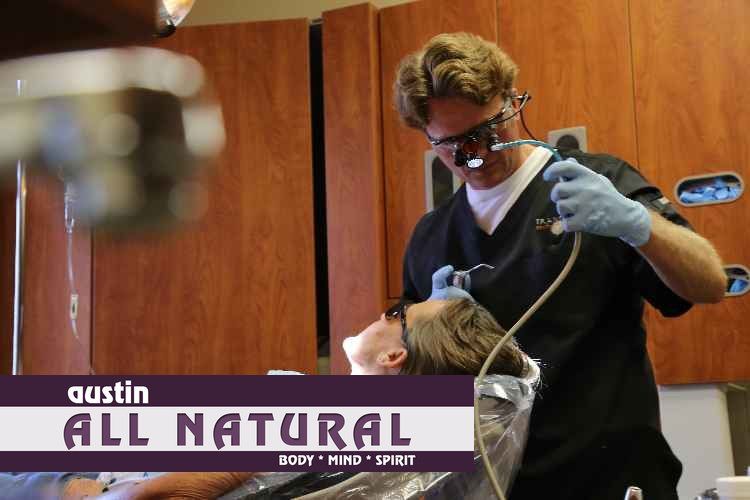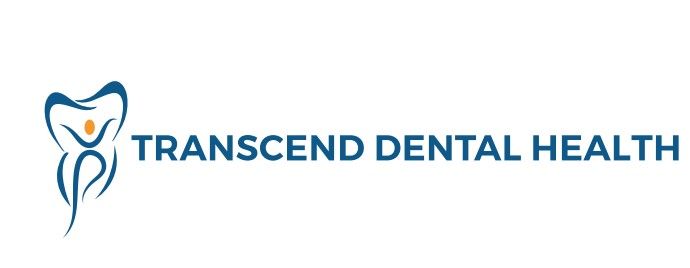Out in The Ozone
This article first appeared in the August 2018 issue of Austin All Natural magazine.
© 2018, Austin All Natural
OUT IN THE OZONE: A new paradigm in dentistry and medicine
Contributed by Dr. Matthew Carpenter, DDS, NMD
‘Physician, heal thyself.’ That’s pretty good advice for a dentist as well, advice I had to take to heart when I realized years of exposure to mercury in dental school and in a dental practice had contributed to my own chronic illnesses.
It was a realization that made me change my entire approach to dentistry, with the mentorship of the late Hal Huggins – the first to have the courage to publicize the dangers of mercury amalgam widely. From there, it was one quantum leap after another in discovering new and innovative approaches to dentistry, and the health of my patients.
The biggest leap of all might have been incorporating ozone therapy into my practice, and researching its application to other forms of healing. It’s a therapy that is so revolutionary, so natural, and so elegant in its simplicity that I even thought at one point about changing my practice from dentistry to ozone therapy exclusively, in all its applications.
Extensive research is being conducted into the uses of oxygen and ozone in healing, and some of the best reports have come from my friends and colleagues, Dr. Philip Mollica, and Dr. Robert E. Harris Jr., lead investigators in a national outcome study on the use of oxygen/ozone in dentistry.
Here are some excerpts from their studies.
by Philip Mollica, MS, DMD, NMD, and Robert E. Harris Jr., DMD
What are the two primary nutrients of life? Protein, carbohydrates, vitamin C, essential fatty acids? The list goes on and on, but the answer is simple – oxygen and water. Without these two nutrients, there can be no life as we know it.
If we take these two elements and use them in maintaining health, hydration therapy and oxygen/ozone therapy are born. Focusing on integrating oxygen/ozone therapy into dentistry is truly a paradigm shift – the capability for effective, safe, nontoxic therapies that address multi-factor infective states within the oral cavity.
A number of therapeutic protocols have been developed to address common dental infections associated with periodontal disease, root canal therapy, and caries.
The history of oxygen/ozone therapy.
Oxygen/ozone therapy has a long history of research and clinical application with humans. German chemist C.D. Schonbein discovered ozone in 1840, and the first medical application was in 1870 when Dr. C. Lender purified blood in test tubes. Medical applications then became widespread throughout Europe and America, and by 1929, more than 114 diseases were listed for treatment with oxygen/ozone therapy.
Interestingly, in 1930 German dentist Dr. E.A. Fisch used ozone regularly in his dental practice in Zurich, Switzerland, publishing numerous papers and influencing the work of Dr. Erwin Payr, a renowned surgeon. Payr’s work set the stage for mainstream use of oxygen/ozone therapy in medicine.
After more than 130 years of use, oxygen/ozone therapy is currently the standard of care in over twenty countries throughout the world, fully recognized by the U.S. medical community in fourteen states, with recognition pending in three states.
Oxygen/ozone therapy was used in the U.S. in 1885, when Dr. Charles Kenworthy, a Florida physician, published his experiences with ozone in the Florida Medical Association Journal. Since ozone use predates the 1906 Pure Food and Drug Act, its subsequent revisions, and the FDA, ozone’s medical and dental use is grandfathered in the U.S. and is perfectly legal to use.
What is ozone, and what does it do?
Ozone, O3, is a chemical compound with three atoms of oxygen, the elemental form of oxygen occurring naturally when ultraviolet energy or lightning temporarily recombines oxygen atoms into groups of three. (In clinical settings, an oxygen/ozone generator simulates lightning via an electrical discharge field.)
Ozone protects living organisms by surrounding the Earth at altitudes of 50,000 to 100,000 feet, absorbing the sun’s harmful ultraviolet rays and allowing survival of plant and animal life. It forms near ground level when ultraviolet light reacts with hydrocarbons, nitrogen oxide, and sulfur compounds, producing photochemical smog.
Ozone is not the cause of smog. However – it is a by-product. A powerful oxidizer, it helps clean the atmosphere of these dangerous compounds and is used as a measuring device for smog levels. To reiterate, it’s not smog, but nature’s way of cleaning up smog.
The properties of ozone are the foundation of what makes it work so well in dentistry. A powerful oxidizer, it effectively kills bacteria, fungi, viruses, and parasites at a dramatically lower concentration than chlorine, with none of the toxic side effects. One molecule of ozone is equal to between 3,000 to 10,000 molecules of chlorine, killing pathogenic organisms 3,500 times faster. In medial and dental generators, medical-grade oxygen is converted to ozone in special tubes, with a discharge reaction similar to lightning. The ratio of oxygen to ozone is low, 0.25 parts of ozone to 99.75 parts of oxygen. Evidence-based research has shown this concentration effectively kills bacteria, fungi, viruses, and parasites.
A continual battle.
Dentistry is in a continual battle with infection of soft and/or hard tissue, coming from bacteria, fungi, viruses, and parasites, or a combination of all the above.
In developmental stages of oxygen/ozone therapy in dentistry, the oral-systemic link was taken into consideration, keeping in mind the far-reaching implications of both acute and long-standing chronic infections seen with periodontal disease and some teeth with root canals.
The systemic effects of oral infections on other areas of the body are well documented in both medical and dental literature. Attempts to eliminate oral infections have been minimally successful due to the interrelated nature of multiple causative factors – microorganisms, diet, saliva, immune responses.
Treatments such as prophylaxis, rinses, fluoride, sealants, restorations, surgical procedures, diet, and lifestyle modification have also altered risk factors. The result is the host adapts to the acute infection, which then converts to a chronic one. These pathogenic organisms, being opportunistic, eventually re-infect afflicted tissue.
Instead of treating the whole body with antibiotic, viral, fungal, or parasitic agents, why not treat the infection with a naturally occurring substance that’s truly broad-spectrum, with no toxicity or side effects?
That substance is oxygen and its energized form, ozone.
The commonality of all pathogenic organisms is the weak antioxidant and enzyme systems in their cell membranes. Ozone punches a hole in that membrane, resulting in its death and exposing the contents of the pathogen to the internal environment, allowing the immunologic system to start its physiologic cascade.
One of the most amazing biochemical and physiological studies recently showed how antibodies actually produce ozone to kill invading microorganisms – so in reality, we’re doing nature’s work within dental standards of care.
Setting therapeutic goals based on sound evidence-based science, inclusive and not exclusive of standard care, is critical. In oxygen/ozone therapy in dentistry, those goals are eliminating pathogens, restoring proper oxygen metabolism, inducing a friendly environment of increased circulation and immune activation, and stimulating the antioxidant system.
Periodontal disease is defined by the American Academy of Periodontology as a
chronic bacterial infection that affects the gum and bone supporting the teeth.
This infection, however, can also be viral, fungal, and parasitic.
The commonality of all pathogenic organisms is the weak antioxidant and enzyme
systems in their cell membranes. Ozone punches a hole in the membrane of the
organism, resulting in its death and exposing the contents of the pathogen to the
internal environment, allowing the immunologic system to start its physiologic
cascade.
One of the most amazing biochemical and physiological studies conducted recently showed how antibodies actually produce ozone to kill invading microorganisms. So in reality, we’re doing nature’s work – inclusive, not exclusive, of dental standards of care.
How treatment works
There are three basic forms of oxygen/ozone therapy, used singly or in combination for dental disease. Ozonated water and olive oil (which have the capacity to entrap and release oxygen/ozone, ideal delivery systems) and oxygen/ozone gas.
For a patient with generalized, moderate periodontitis, one possible protocol for oxygen/ozone therapy, out of many, involves irrigating pockets with ozonated water, reducing and eliminating pathogenic loads. (Austin’s Transcend Dental Health, in fact, uses ozonated rinse water prior to all cleaning or surgical procedures.)
Mechanical removal of debris can then be more safely performed, lessening the infection burdening the body, and re-irrigation is performed. The rocket fuel for all these procedures is the mixture of oxygen/ozone gas.
Standard home-care instruction might include ozonated olive oil applied to soft tissue, releasing oxygen and ozone to support the therapy. For stubborn areas, oxygen/ozone can be injected directly into the area.
Similar treatment protocols can be paradigm-shifters for both root canals, some of which are in a state of chronic infection, and treatment of dental caries – cavities caused by bacteria. (Studies have shown
The methods applied are safe, with no toxicity or side effects. If we use pharmaceuticals to resolve multi-type pathogenic microbe infections, it would include many different agents – with known side effects.
Dr. Matthew Carpenter of Transcend Dental Health is an Integrative Biologic Dentist and Board Certified Naturopathic Physician, offering ozone therapy, natural oral care products incorporating essential oils, drill-free air abrasion, non-surgical gum disease treatment, safe mercury and root canal removal, and natural heavy metal elimination. (512) 255-3618, www.tdhtx.com





